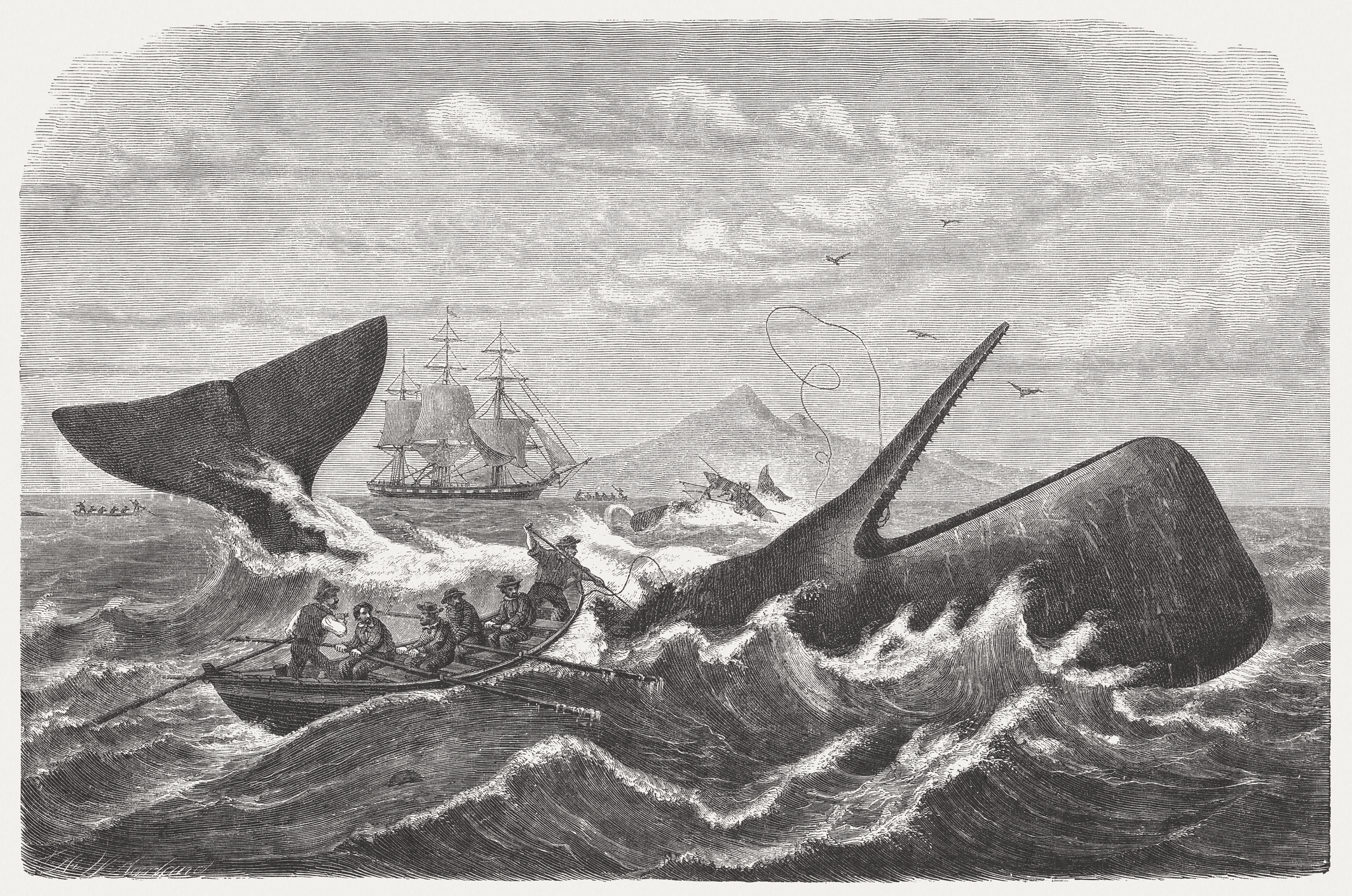No Moby: There Is No Chapter About Sag Harbor in Herman Melville's Book

Herman Melville’s Moby Dick is one of the great masterpieces of American fiction. Written in 1851, it chronicles Captain Ahab’s obsessive chase of the great white whale. One of his sailors, Ishmael, narrates the story.
Since Sag Harbor is one of America’s former whaling towns, the village adopted this book, and every summer over two days, prominent residents read it slowly chapter by chapter aloud tag-team fashion in such places as the Old Whaler’s Church, Canio’s Books and the Sag Harbor Whaling and Historical Museum.
It’s often been said that there’s one whole chapter about Sag Harbor. Read it and you can really get the feeling of what Sag Harbor was like in those days. Here’s how the book begins:
“Call me Ishmael. Some years ago — never mind how long precisely — having little or no money in my purse, and nothing particular to interest me on shore, I thought I would sail about a little and see the watery part of the world.”
Well, I’ve tried numerous times to read Moby-Dick. But I can’t get through it. I zone out. It is one of just two great books I’ve been unable to get through. The other is James Joyce’s Ulysses. My college degree is in English. Yet I had to fake having read those two.
But then, the other night, I realized there was a way I might get to read that chapter about Sag Harbor. I could download it on my Kindle E-reader, and then have the Kindle search the book for “Sag Harbor.”
So I did that. Astonishingly, I found only five references in the entire 500-page book for the words “Sag Harbor,” and they are pretty much spaced out. You’d think a chapter on Sag Harbor would have lots of close-together repeats of those words.
Here’s the first, together with the context.
“A Sag Harbor ship visited his father’s bay, and Queequeg sought a passage to Christian lands. But the ship, having her full complement of seamen…”
The second:
“…old Sag Harbor and seeing what the sailors did there, and then going on to Nantucket, and seeing how they spent their wages in that place also, poor…”
The third:
“…was in Sag Harbor. The owners of his ship, it seems, had lent him one, in which to carry his heavy chest to his boarding house…”
(The boarding house is in New Bedford.)
The fourth:
“…Sag Harbor, you will come across lively sketches of whales and whaling-scenes, graven by the fishermen themselves on Sperm Whale-teeth, or ladies’…”
The fifth:
“One old Sag-Harbor whaleman’s chief reason for questioning the Hebrew story was this: — he had one of those quaint old-fashioned Bibles…”
Sag-Harbor, with the dash, is the name of a whaling ship crew member. But you never find him in Sag Harbor:
“Poor Sag-Harbor, therefore, seems worsted all round. But he had still another reason for his want of faith. It was this, if I remember it right: Jonah was swallowed…”
It has always seemed amazing to me that Sag Harbor, which has been restored to the olden days, is not restored to the whaling era but to the era of the 1950s. Among its stores is a locally owned pharmacy, a 5- and 10-cent store, several ice cream parlors, the movie theatre with a giant neon “Sag Harbor” on its marquee, a locally owned bookstore, a former four-story factory where they made wristwatch casings (now a condominium), a Chinese takeout and a fake windmill that doubles as a visitor’s center.
The whaling era was in its heyday from the late 1700s through the mid-1800s. 1849 was, at the time, called the “million-dollar year” because of the whaling industry. More than 100 three-masted whaling ships were berthed at Long Wharf that year. The stores on Main Street included bars, rooming houses, warehouses and whore houses.
Moneylenders, sailmakers, blacksmiths, barrel makers, ironmongers, harpooners and shipmates from all over the world who spoke dozens of different languages were here. But in 1849, word came down that there was gold in California. Before the year was out, practically every ship sailed off to San Francisco. And the town died.
After that, Sag Harbor found modest success as a manufacturing town until about 1950, when the factories closed. It struggled along. Then, around 1980, summer people arrived and began buying and fixing up abandoned homes. As for downtown, it got restored to 1950 specifications. And all the whaling stuff was collected by the Whaling Museum.
I think the problem with reading Melville’s Moby Dick is that everybody reads one chapter and figures the chapter on Sag Harbor must be in one of the other chapters.
Someday someone will manage to read the whole book through and find out it isn’t there. Sad.



